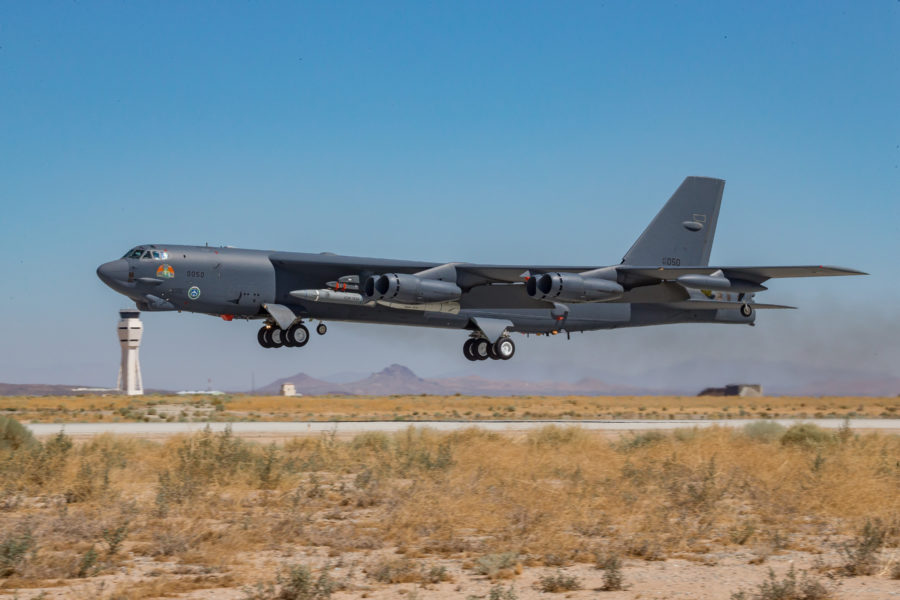The first operationally-configured AGM-183 Air-Launched Rapid Response Weapon (ARRW) flew a successful test flight Dec. 9, the Air Force reported, marking three successful powered flights in a row for the hypersonic air-to-ground missile.
The test, conducted from a B-52 off the southern California coast, was “the first launch of a full prototype operational missile,” the service said. The all-up round was released from the bomber, accelerated to hypersonic speed, separated from its booster, and continued to fly at speeds “greater than five times the speed of sound,” according to a release the 96th Test Wing at Eglin Air Force Base, Fla.
The ARRW then “completed its flight path and detonated in the target area.”
The Air Force declined to provide further details to Air & Space Forces Magazine. “Hypersonic” speed is in excess of Mach 5, or five times the speed of sound.
The mission was flown by the 412th Test Wing out of Edwards Air Force Base, Calif. Hypersonic flights of the ARRW took place in May and July of this year.
“The ARRW team successfully designed and tested an air-launched hypersonic missile in five years,” Brig. Gen. Jason Bartolomei, Armament Directorate Program Executive Officer, said in a statement, adding that he’s proud of the “tenacity and dedication this team has shown to provide a vital capability to our warfighter.”
Lockheed Martin Missiles and Fire Control is the developer and builder of the ARRW. The test program had a rocky start with multiple launch failures, but the success of the December test indicates the program is on more solid footing.
Air Force Secretary Frank Kendall said early this year he wants to see more consistent performance from the missile before discussing its future service with Global Strike Command. Congress trimmed $161 million from ARRW production funding in fiscal year 2022 citing program delays and launch failures. Kendall has also said hypersonic missiles are not as high a priority for USAF as they are for China, due to different force employment operational concepts. China is considered ahead of the U.S. in developing and fielding hypersonic weapons.
The air-to-ground ARRW “is designed to enable the U.S. to hold fixed, high-value, time-sensitive targets at risk in contested environments,” the Air Force said.
A Lockheed spokesperson said the test “demonstrates the missile’s operational end-to-end capability at hypersonic speeds, validating the design and production” of the system.
“We are on the cusp of an operational capability that can be deployed to the men and women in uniform,” Jay Pitman, vice president of air dominance and strike weapons at Lockheed MFC, said in a statement. The test shows the “commitment, rigor, and dedication of the joint U.S. Government and Lockheed Martin team to develop hypersonic weapons on accelerated timelines to meet critical national security needs,” he said.
The ARRW program has carried out numerous developmental steps including “captive carriage flights, sled testing, warhead qualification, solid rocket motor qualification, and two consecutive hypersonic-boosted flight tests,” Lockheed added.
Last week, Airmen at the 2nd Bomb Wing at Barksdale Air Force Base, La., ironed out the procedures for loading and unloading the ARRW in an operational setting, the Air Force said. Thus far, the missile had only been loaded onto test aircraft.
The ARRW is one of two hypersonic missiles being developed by USAF to attack urgent, time-sensitive targets. The ARRW is boosted to hypersonic speed by a rocket, then glides to its target—hence its name “boost glide”—whereas the Hypersonic Attack Cruise Missile, or HACM, is an air-breathing system that uses a scramjet to sustain hypersonic flight. Raytheon was selected in September as the prime contractor for HACM.
